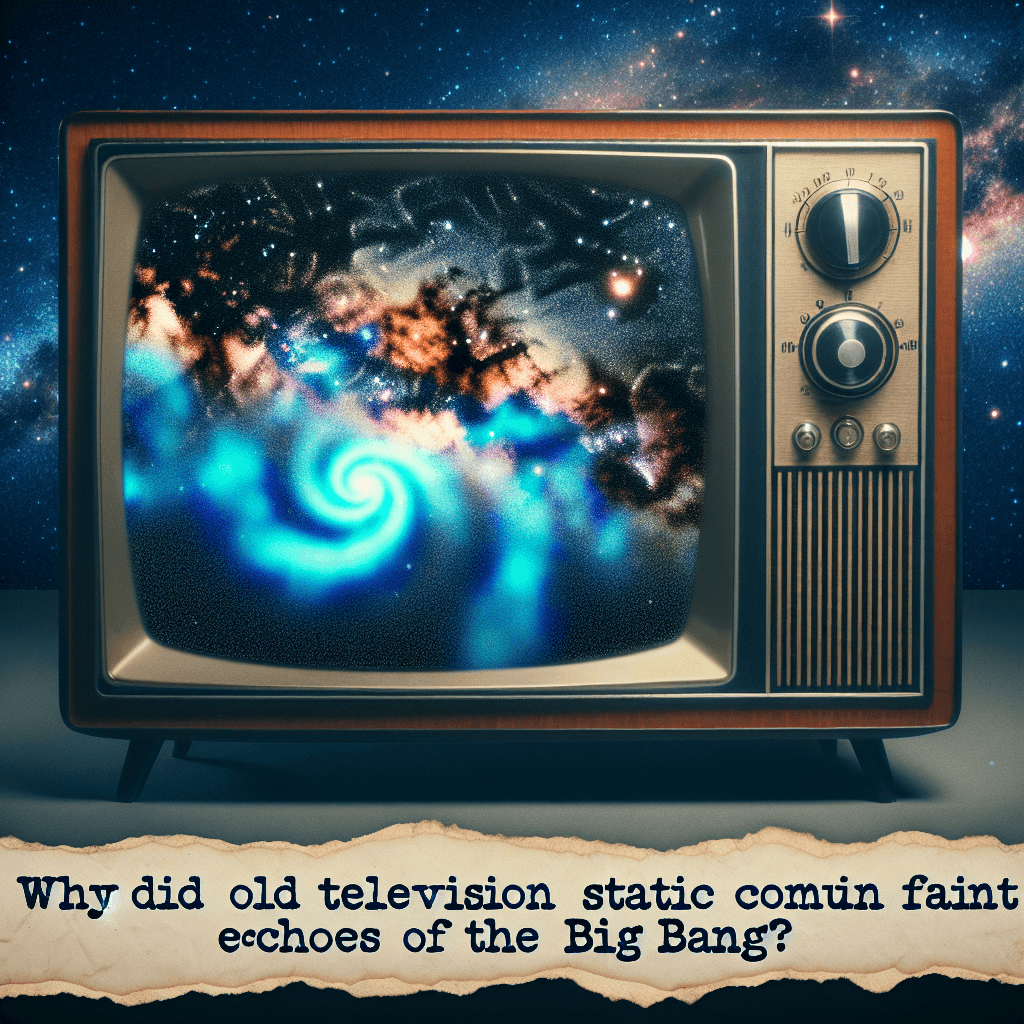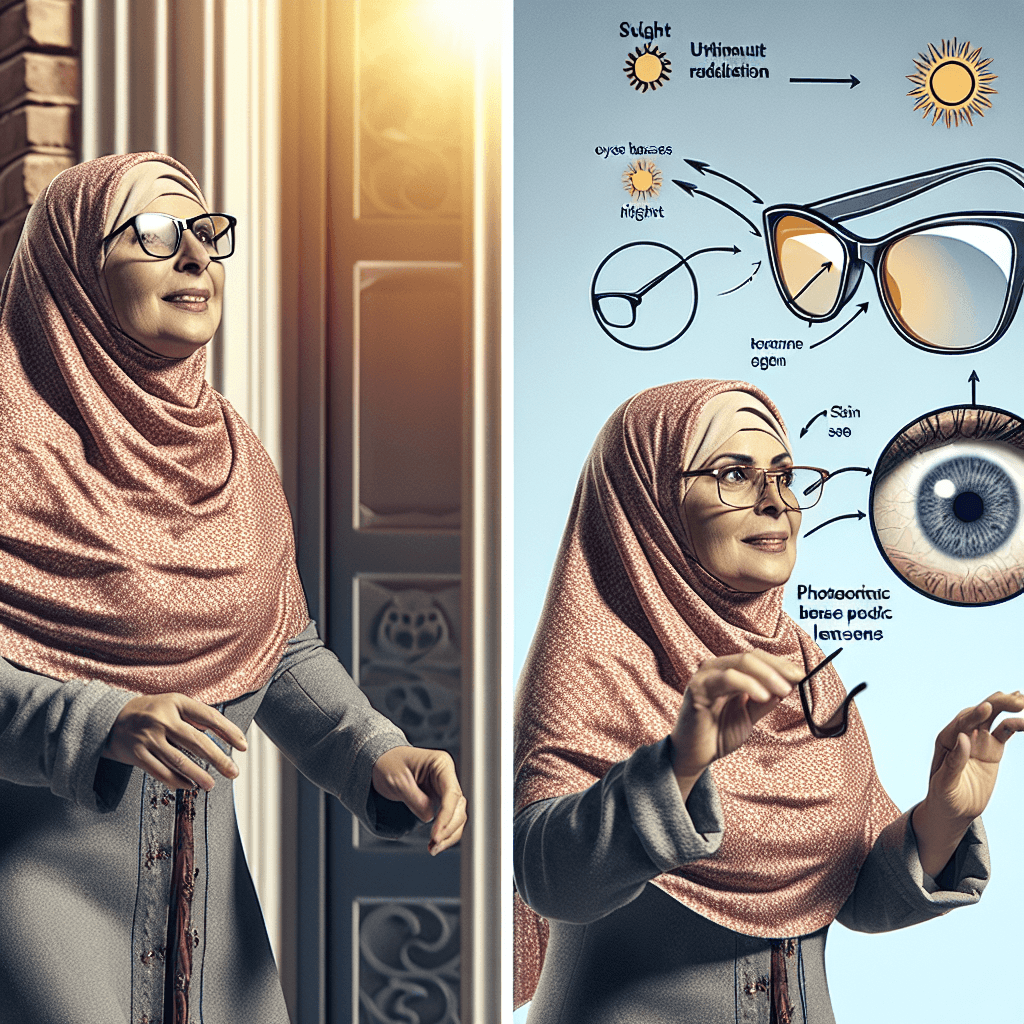From 'Snow' to the Stars: Why Old TV Static Contained Faint Echoes of the Big Bang
The 'snow' on old analog TVs wasn't just random noise. Astonishingly, a tiny fraction of it was a direct, faint echo from the very dawn of our universe—the Big Bang.


Too Long; Didn't Read
A small percentage of the static on old analog televisions was interference from the Cosmic Microwave Background, a faint radiation signal left over from the Big Bang.
From "Snow" to the Stars: Why Did Old Television Static Contain Faint Echoes of the Big Bang?
Remember the mesmerizing, yet frustrating, "snow" that would fill the screen of an old analog television when it wasn't tuned to a channel? That seemingly random dance of black and white dots wasn't just meaningless noise. Astonishingly, a tiny fraction of that static was a direct, albeit faint, echo from the very dawn of our universe—the Big Bang. This post delves into the fascinating science behind how your grandparents' TV set inadvertently became a crude detector of cosmic history, revealing why old television static contained faint echoes of the Big Bang.
Understanding Television "Snow"
Before digital broadcasting became the norm, televisions relied on analog signals. These signals, transmitted as radio waves, carried the picture and sound information. When a TV antenna was tuned to an active broadcast channel, it received these strong, specific signals. However, if you tuned to an "empty" channel or had poor reception, the television's internal amplifiers would boost whatever weak electromagnetic signals the antenna happened to pick up.
This amplified noise manifested as the characteristic "snow" or static on the screen and the accompanying hissing sound. The sources of this noise were varied:
- Local electrical interference from appliances.
- Radio waves from nearby transmitters (not strong enough to form a picture).
- Thermal noise generated by the antenna itself and the TV's electronic components.
- Natural radio emissions from Earth's atmosphere (like lightning).
But amongst this cacophony, a truly ancient signal was also present.
The Cosmic Microwave Background: A Relic of Creation
To understand the Big Bang connection, we need to introduce the Cosmic Microwave Background (CMB). The CMB is the afterglow radiation from the Big Bang, a faint, pervasive glow of microwaves that fills all of space.
In the very early universe, just after the Big Bang (around 13.8 billion years ago), the cosmos was an incredibly hot, dense soup of particles and radiation. Light (photons) couldn't travel far before bumping into charged particles like electrons and protons. However, about 380,000 years after the Big Bang, the universe cooled enough for protons and electrons to combine and form neutral hydrogen atoms. This event, known as recombination, made the universe transparent to light for the first time.
The light that was released at that moment has been traveling across the expanding universe ever since. As the universe expanded, this light has been stretched, its wavelength increasing and its energy decreasing. What started as intense, high-energy radiation is now detected as a faint microwave glow, with an average temperature of just 2.725 Kelvin (about -270.4 degrees Celsius or -454.8 degrees Fahrenheit). This is the CMB, a nearly uniform snapshot of the infant universe. Its accidental discovery in 1964 by Arno Penzias and Robert Wilson, who were trying to eliminate persistent noise in a new horn antenna, earned them the Nobel Prize in Physics and provided some of the strongest evidence for the Big Bang theory.
The Connection: How Your TV "Heard" the Big Bang
So, how did this ancient cosmic signal end up on your old television screen?
- Antennas are Broad Receivers: Television antennas are designed to pick up electromagnetic waves within a certain frequency range (typically VHF and UHF bands for analog TV). While they are optimized for specific broadcast frequencies, they are not perfectly selective and will pick up any electromagnetic radiation in their vicinity.
- CMB is Everywhere: The Cosmic Microwave Background radiation is isotropic, meaning it comes from all directions in space with almost uniform intensity. No matter where you point an antenna (on Earth), it will receive this faint microwave signal.
- A Tiny Fraction of Static: When an analog TV was tuned to an unused channel, its circuits amplified all incoming signals, including the CMB. While most of the static was due to more local and terrestrial sources, scientific estimates suggest that approximately 1% of the random "snow" visible on an untuned analog TV screen was directly attributable to the Cosmic Microwave Background radiation.
Your television wasn't "seeing" the Big Bang itself, but rather detecting the oldest light in the universe – the faint, stretched-out echoes of that cataclysmic event.
Why Don't We See This on Modern TVs?
This cosmic connection is largely a relic of the analog era. Modern digital televisions work differently. Digital signals are encoded as binary data (1s and 0s). If a digital TV receives a weak or corrupted signal, it typically doesn't produce static. Instead, you might see a frozen image, pixelation, a "no signal" message, or a blank (often blue or black) screen. The error-correction algorithms and signal processing in digital TVs are designed to either display a perfect picture or nothing at all, effectively filtering out the kind of random noise that included the CMB.
Conclusion
The fact that old television static contained faint echoes of the Big Bang is a remarkable testament to the interconnectedness of our everyday technology and the profound history of the cosmos. That seemingly mundane "snow" carried whispers from the universe's infancy, a tiny fraction of its composition being the oldest light observable. While digital technology has moved us past static-filled screens, the underlying science remains a fascinating reminder that evidence of the universe's grandest events can be found in the most unexpected places, subtly influencing even our outdated gadgets. It’s a beautiful thought that for decades, households unknowingly had a window, however fuzzy, into the dawn of time.
More Articles

Why do some glasses automatically get dark when you step into the sunlight?
It’s not magic, but a marvel of molecular engineering happening right before your eyes; discover the secret behind the tiny molecules that give your glasses their sun-adaptive superpowers.

Why was a sauce made from rotting fish guts a popular delicacy in ancient Rome?
It was a luxury sauce worth more than perfume, yet its main ingredient was rotting fish guts—discover the secret behind ancient Rome's most stomach-turning delicacy.

Why does intense exercise sometimes make your mouth taste like metal?
Ever pushed yourself so hard in a workout that you started tasting pennies? That metallic tang isn't in your head—it’s the surprising taste of your own red blood cells being pushed to their absolute limit.